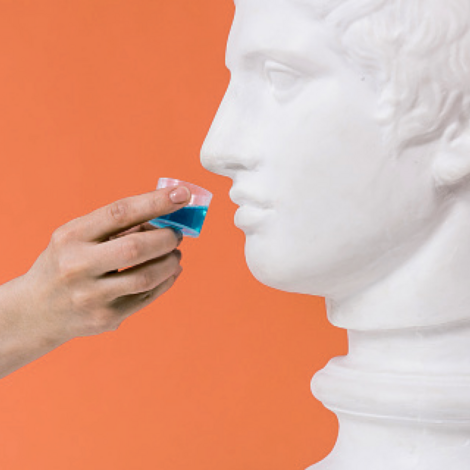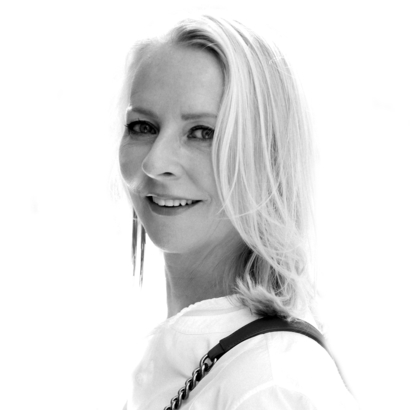Plastic surgeons’ offices have one architectural feature in common: a back door. Without it, they might as well not bother with scalpels or anesthesia. Patients enter and leave this way, and if they have an IMDb page, they may take the extra precaution of scheduling their procedures in the middle of the night so they can exit through the back door without detection.
Now, though, some patients are posting their before-and-afters on Instagram, complete with gauze wrapping, blood-filled drains dangling like earrings, livid scars, and bruising. These patients might as well invite TMZ to meet them in the recovery room. The back door isn’t getting quite as much action as it once did.
When Stacey Bendet, 47, got a facelift—excuse me, a mini midi deep plane lift—on July 16th, she had no intention of creeping out of her surgeon’s office through an unmarked exit in the wee hours. But she also wasn’t planning to announce her surgery to the world. Bendet, the creative director and CEO of Alice + Olivia, the clothing line, kept silent until she couldn’t contain herself any longer.
“I was so happy with how it looked after two days that I shared it.”
Three days after surgery, she revealed her bruises and scars on Instagram. On day seven, she posted a video on Instagram documenting the removal of the stitches under her chin.
Bendet represents a new generation of plastic surgery patients: Those in their 40s who want to address sagging or drooping quickly and efficiently. These patients research techniques and doctors so thoroughly that they can rattle off the difference between a deep-plane and a SMAS lift, a lower face and a brow lift. The words “platysma muscle,” “polynucleotides,” and “tranexamic acid” roll off their tongues. Some members of this group aren’t especially concerned if their followers on social media know why they suddenly look so fresh. In an Instagram reel, one of Bendet’s friends told her, “You’ve aged so well.” To which Bendet replied, “It’s tequila and maybe like 10 or 12 doctors.”
That may sound like an exaggeration, but Bendet has a Rolodex of medical experts in the U.S., Europe, and South Korea who attend to various parts of her face and body. She’s had her nose straightened but kept the small bump on the bridge, her breasts lifted after nursing three nine-and-a-half-pound babies, her tummy tucked after hernia surgery, her lips enhanced with the “lightest, lightest amount of filler,” and her lines and pores regularly lasered, injected, and micro-needled.
She recently presented her dermatologist, Dr. Daniel Belkin, a birthday cake decorated with fondant syringes and a buttercream message on top: “I can’t feel my face when I’m with you but I love it.” Dr. Belkin says about Bendet, “Everything we do is collaborative.” He helped her select a plastic surgeon, Dr. Andrew Timberlake. And once she did, Bendet offered to redesign the gown and socks he issues to patients.
Bendet is exacting. She decided to undergo surgery when she noticed in videos of herself that “one side of my face had more laxity than the other, and it made me self-conscious.”
Dr. Timberlake, who spoke to me with Bendet’s permission, says, “She had an idea of what she wanted to have done and she had a very clear idea of what she didn’t want to have done,” says Dr. Timberlake.”I like that.”

Bendet explains, “I did not want to get a full facelift. I wanted a little tweak.” She determined that what she was after was a “baby lift.” “It was the idea of bringing that youthful, baby effect back to your skin and face,” says Bendet.
Needless to say, “baby lift” is not a medical term. “That was invented by Stacey,” says Dr. Timberlake. “It refers to the fact that we did not address the low neck. It is still a deep-plane facelift, but it’s just not as extensive. There are no cuts behind the ears.” He made incisions in front of her ears and under her chin. When I examined her scars three weeks after the procedure, I had to put on my glasses and look closely to detect the faint ones by her ears. The one under her chin was still visible; she plans to get it lasered to hasten the healing.
This minimalistic approach represents another way that facial plastic surgery is changing. “Early in my training, there was this mantra that a tight facelift was a good facelift,” says Dr. Timberlake. “And tight is really a bad word in 2025.”
Calling it a baby lift is on-brand for Bendet, who is petite and often wears princessy long floral dresses, platform shoes, a tiara, and a Labubu or two attached to her handbag. She says she has a “doll face” and often gets carded when she orders a drink at a restaurant. She doesn’t look like someone who needs surgery or even a tweak, baby or otherwise. But that’s partly her point: she prefers to attend to small concerns before they become, in her eyes, big issues.
By going public with her surgery, Bendet believes she’s performing something of a service to the many people who are ashamed of being called vain or superficial for interfering with the natural aging process. “There’s so much secrecy to this. But as women, our whole lives we’ve been shown youth and beauty and all these things to make us look better and age less. So why should surgery be such a stigmatized part of that?”
Women have always been judged for doing too little or too much to maintain their looks. As cosmetic surgery becomes more culturally acceptable, moralizing about it hasn’t entirely disappeared. It’s just become more complicated, with subtle changes being commended only as long as they’re imperceptible. The ultimate compliment is, “You look rested,” which has also become code for a good facelift.
“I’m not advocating for everyone to go and have surgery,” says Bendet. “I’m advocating for open discussions about what you feel.”
Some of these open discussions occur between Bendet and her three daughters, ages 16, 14, and 9. They often voice their amused opinions off-camera on Bendet’s Instagram. Scarlet Eisner, her 14-year-old, narrated one video, saying, “This is my mom. She just got a neck, face, something lifted, I don’t know. She looks kind of snatched.”
“It’s tricky as a mom of daughters,” says Bendet. “They’re gorgeous how they are. And I want them to know that and feel that and be confident. You’re supposed to be confident with how you look. But if you’re not…” she trails off. “I would say I’m not someone who’s self-critical in an insecure way. I’m more in a, ‘Hmm, that could be better. What are we going to do about it?’”
She’s attracted to the idea of aging gracefully and defines it as “aging in a way that you feel better about yourself each year. It’s that subtle aging where you see a woman’s story on her face, but she still looks really beautiful.” It sounds idealistic, like magical thinking, as if one could stitch inner beauty to its outer expression without leaving any scars.
“The reality is we’re all going to age. It’s unavoidable. If you’re someone who doesn’t believe in surgery and wants every line on your face to show their story, that’s your graceful aging.” She pauses before stating the obvious. “That is not my graceful aging.”
Linda Wells is the Editor at Air Mail Look





